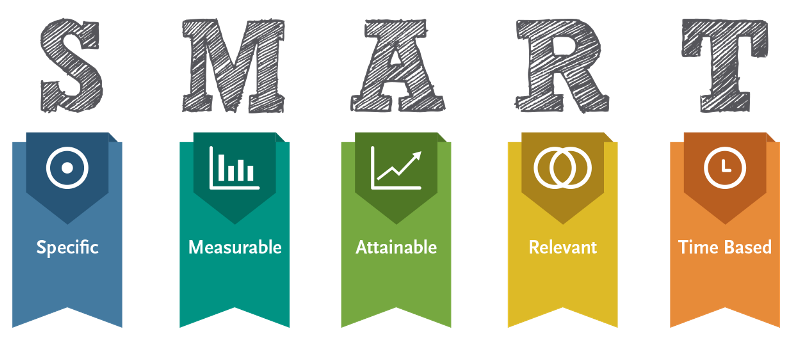
A Step-By-Step Guide To Write The Perfect Project Proposal
The degree of success or failure of any project depends heavily on the quality of its proposal. You won’t be able to bag the project in the first place if the project proposal is not up to the mark. On the other hand, if you do win the project but the proposal didn’t clearly lay out the critical details of the project, you are in an even bigger trouble. Because now the client would not be clearly aligned with you on the exact deliverables and other characteristics of the project, and that is a recipe for disaster.
Thus, it is imperative to write a project proposal that is perfect in every sense. Let’s discuss the steps that need to be undertaken for the same.
How To Write The Perfect Project Proposal ?
Writing the perfect project proposal is both an art and a science. Follow these steps to hit the right notes with the clients as they’ll help you formulate an enticing and actionable project proposal.
Write an Executive Summary
The major trade-off that needs to be negotiated in crafting a proposal for your project is between the amount of details present in it and its length. If there are too few details, clients won’t be convinced, whereas if the proposal is too lengthy, no one is going to read it.
This is where executive summary comes to the rescue. Think of it as an elevator pitch for your project to the client. It should neatly summarize what your project would cover, how it would achieve the goals and why you are best suited to take this project.
Executive summary provides a clear gist of your project to the client and is the most critical part of your proposal. If your executive summary is perfectly on the spot and resonates with your clients, then only they are going to read your proposal further in detail.
Clearly Define the Goals
Every project should have clearly stated goals. Define the aim of the project and the subsequent goals in line with the problem statement of the client. This would convince the clients that you have thoroughly understood their pain points so that they begin to trust you.
Apart from addressing the pain points of the client, ensure that your goals follow the S.M.A.R.T. acronym- Specific, Measurable, Achievable, Relevant, and Time-bound.

Define Project Scope
The next step is to expand each goal or objective into specific deliverables that you would undertake in your project. Project scope should lay out the actual work that you plan to carry out to achieve the goals you stated earlier.
As a project manager, you should always strive to make the scope of the project as exhaustive as possible. This way your clients won’t face any surprises during the project execution part. In a way, it is the most critical part of project planning that needs to be dealt with utmost care. Don’t go overboard by promising work that you can’t deliver, but don’t be too conservative either.
A well-balanced scope that clearly defines the work that you’ll be undertaking as part of the project would help you immensely throughout the next steps of project lifecycle. Make sure that the client has understood the project scope thoroughly before starting with the project to avoid any tussle.
Lay Out The Project Timeline
Further, it is important you breakdown the entire project scope into tangible milestones with a realistic timeline. The project timeline would be the guiding force while executing the project. Try to make the timeline as crisp as possible with clear deliverables stated in the form of milestones. Achieving the milestones would readily let you know the progress of the project in terms of percentage completion.
Include Budget Allocation
Apart from time, cost is the other major constraint within which you have to complete a project successfully. Define the cost structure of your project and present the budget allocation for every milestone. Make sure that you have covered even the minutest of the expenses within the budget. This will help your clients avert any ugly surprises during the execution part that can result in a cost overshoot and eventual loss.
Project Team Details
Client should be made aware of the team that will be working on their project as well as the main person responsible for the entire project, i.e. the project manager. Introduce your client with yourselves and your team and mention your credentials, strengths, accomplishments, and skill sets apart from the role that everyone will be playing in the execution of the project.
Explain Project Methodology
Yet again, it is a critical part of every project proposal. But a lot of project managers tend to leave it out of their proposal. Present your client with the elaborate approach that you will take towards completing their project within stipulated time and budget while ensuring that the pain points have been addressed holistically. Include your systems, flowcharts, philosophy, mantra and whatever you have to set you apart from your competitors. Also mention the tools that you would be using, such as simple project management software.
Communication And Reporting
Another vital area that needs to be covered in the proposal is communication. Clearly state the type of project reports that you’ll share with the client, their frequency, purpose and any other important feature that you deem necessary. If you’ll be using an easy project management software program or any other tool to send automated reports, ensure that you are mentioning the same too. Besides, propose a meeting schedule that is mutually agreeable.

Payment Structure
Any project proposal would be incomplete without a clearly laid out payment structure. You should state the project fee that you’ll charge upfront, at each milestone as well as at the delivery of the complete project. Clearly propose mutually agreeable rules that would come into play in case there is a scope creep or change in project requirements at a later stage.
The Perfect Project Proposal : Conclusion
The need of writing the perfect proposal can’t be emphasized enough. If you follow the guidelines mentioned in this article, and put the same into practice, you can easily start improving your proposal quality.

Subscribe To Our Newsletter
Join our mailing list to receive the latest news and updates from our team.























